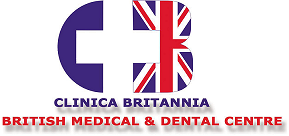Dental caries is defined as a chronic dynamic process or disease that occurs in the structures of the teeth when exposed to microbial deposits, resulting in a loss of minerals due to an imbalance between the tooth material and the surrounding plate. A surface characterized by localized destruction of hard tissue.
It is one of the most common diseases that affect more than 90% of the population. It is classified as a contagious and irreversible disease.
Its increase is related to social development and changes in the eating habits of the population; however, studies carried out in recent years show a downward trend, mainly among people under 15 years of age. Their behavior varies from one country to another due to factors such as the existing health system, culture, eating habits, economy, and environment.
Health promotion and disease prevention measures aimed at reducing their incidence include measures aimed at educating people to improve hygiene and eating habits and measures aimed at increasing dental resistance through topical or systemic application of fluoride.
Dental caries is a disease of multifactorial origin in which there is an interaction between 3 main factors: the host (especially saliva and teeth), the microbial community, and the matrix. In addition to these 3 factors, there are also factors to consider such as time.
For caries to develop, favorable conditions must exist for each factor: the presence of a susceptible host, cariogenic flora of the oral cavity, and appropriate substrates within the specified time frame.
Active carious lesions can be stopped at any stage of progression by interrupting the imbalance between the tooth material and the surrounding bacterial plaque, by removing the plaque.
The following risk factors that contribute to the appearance of caries can be mentioned.
Streptococcus mutans is the microorganism most associated with caries activity.
Lactobacilli are associated with the progression of the crown and/or root caries lesions. High levels of Lactobacillus infection are associated with high caries activity and a high intake of fermentable carbohydrates.
In general, people with cavities are more likely to develop the disease. It is also important to consider the severity of the lesion as a risk, the greater the severity, the more likely it is that caries activity will continue.
When the strength of the enamel is not sufficiently resistant to acid erosion and the demineralization process is prolonged, which contributes to the development of dental caries.
Demineralization occurs when the ability of minerals to be incorporated into newly dissolved teeth or the ability of minerals to re-incorporate into demineralized enamel is compromised and promotes the caries process.

A cariogenic diet is one of the main factors that cause caries. The cariogenicity of a food product is not determined solely by the sugar content, the following factors must also be taken into account: Physical properties of the food, solubility, retention, ability to stimulate saliva flow and chemical changes in saliva, texture (particle size and shape), frequency and time of consumption and residence time in the mouth.
Deficiencies in oral hygiene are manifested with a greater accumulation of plaque that reduces the diffusion coefficient of acids produced by fermenting microorganisms; favors demineralization processes and increases the risk of dental caries, especially in populations with a high number of cariogenic microorganisms.
Preventing the drop in pH and restoring your low saliva volume increases the likelihood of demineralization.
The protective function of saliva is compromised by reduced saliva flow, which promotes demineralization and increases the number of cariogenic microorganisms. This increases the risk of cavities.
Thick saliva is less efficient at capturing carbohydrates and promotes demineralization.
With moderate and severe crowding, orthodontic treatment and restoration complicate oral hygiene procedures, contribute to the accumulation of pathogenic plaque, and thus facilitate demineralization.
People with periodontal disease or related diseases are at increased risk of root caries.
As social factors, we can also identify social factors such as low-income level, low level of education, low level of knowledge about health education, and inadequate health policy.
Other risk factors that may be indicated include low birth weight, diabetes, pregnancy, malnutrition, hypoparathyroidism, hypothyroidism, patients with epilepsy, cerebral palsy, physical and/or mental disabilities, vitamin deficiencies, bottle feeding, human radiotherapy, people treated with anxiolytics, psychoactive substances, antihistamines, sedatives, and tranquilizers.
The overall goal of dental caries prevention is to reduce its incidence, prevalence, and severity. They can be implemented at the individual, family, and community levels. An annual consultation is essential for prevention and early diagnosis.

